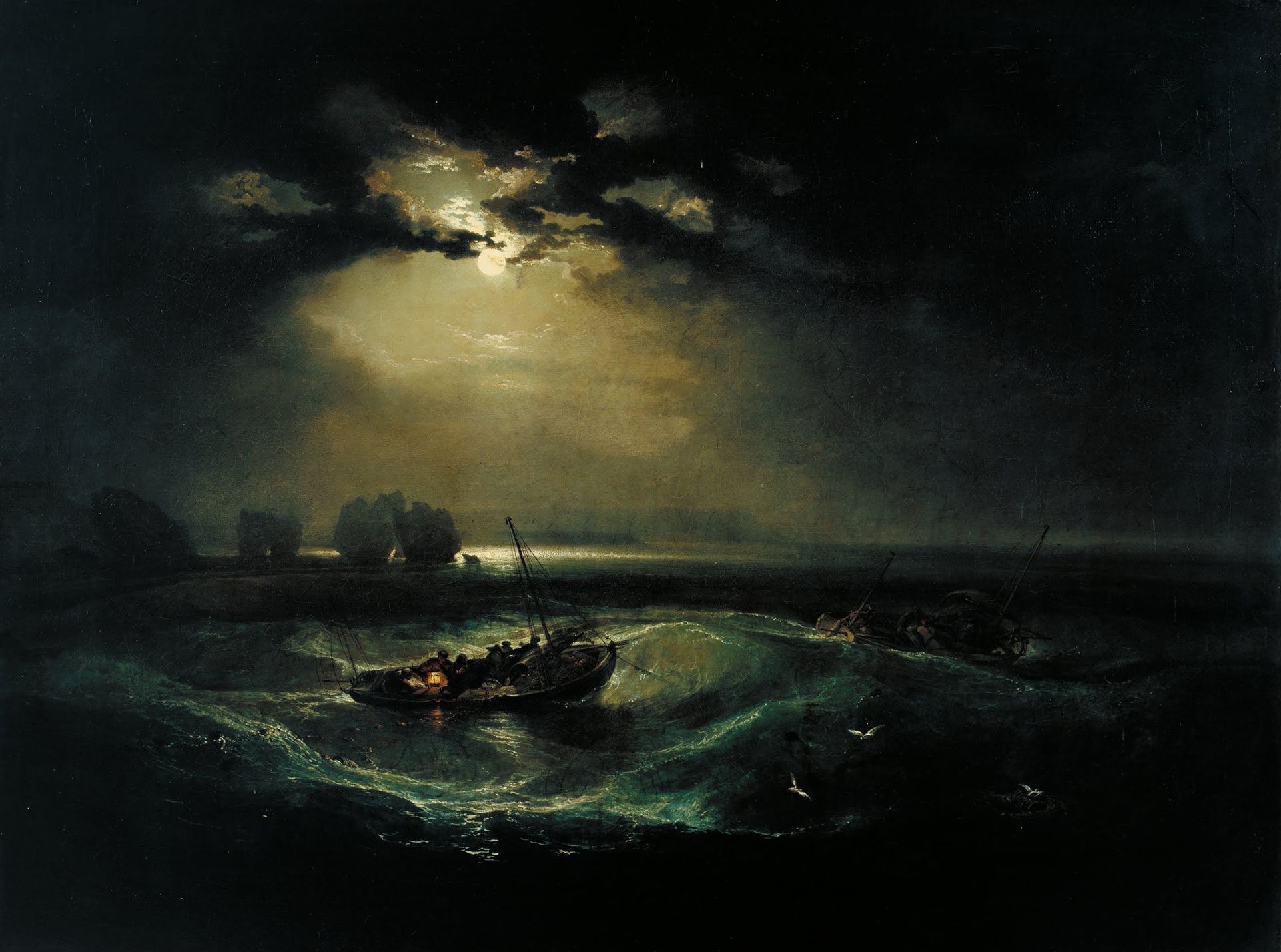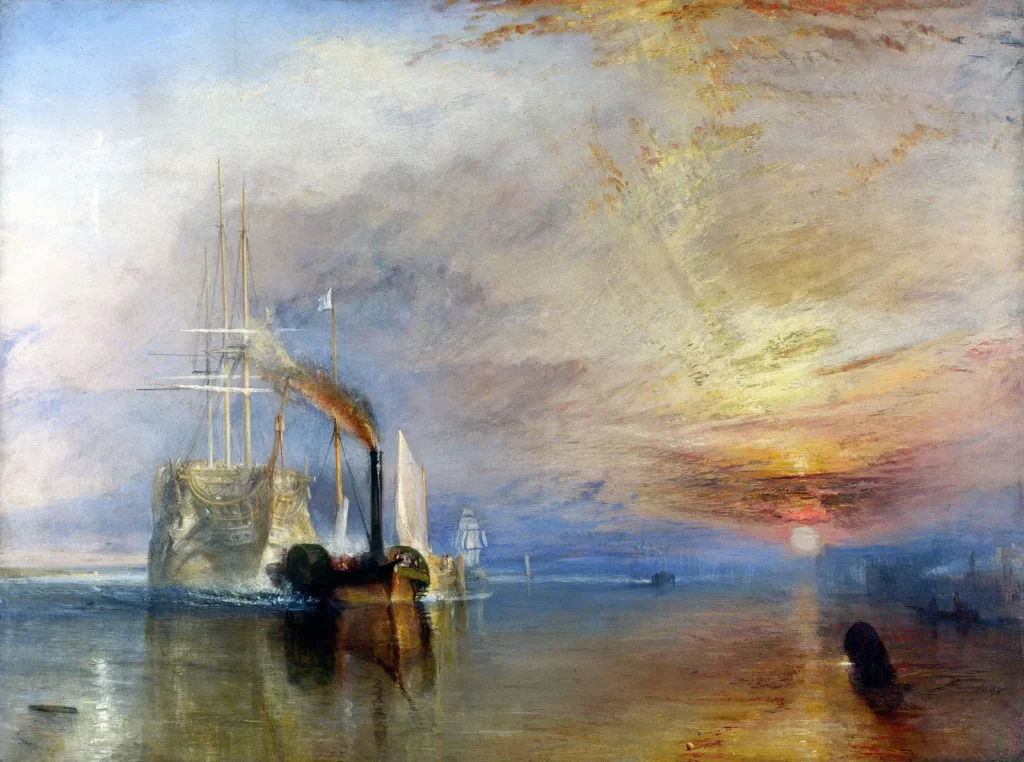Introduction
Joseph Mallord William Turner, commonly known as JMW Turner, remains one of the most influential figures in art history. Renowned for his expressive colorisations, imaginative landscapes, and turbulent marine paintings, Turner’s work laid the groundwork for the Impressionist movement. His mastery in both oil and watercolor paintings is celebrated worldwide, with works like The Slave Ship, Rain, Steam and Speed, and Snowstorm continuing to captivate audiences with their dynamic energy and dramatic intensity.

JMW Turner’s Impact on the Art World
JMW Turner’s art is characterised by a fascination with light and atmospheric effects. Born in 1775, Turner began exhibiting his work at an early age, quickly gaining recognition for his remarkable talent in capturing settings that range from serene to stormy. His contributions to art are immense, not only in the realm of landscape painting but also in setting a precedent for future generations of artists who explore the boundaries of light and color in their work.
Celebrated Works of JMW Turner
Turner’s paintings, often vibrant and laden with emotive power, challenge the viewer’s perception of nature. Some of his most acclaimed works include:

The Slave Ship (1840): This painting is one of Turner’s most powerful works, using vibrant hues to depict a harrowing scene inspired by a true story of human suffering and the cruel sea. It’s an impactful portrayal of the horrors of the slave trade, showing Turner’s moral engagement with contemporary issues.

Rain, Steam and Speed – The Great Western Railway (1844): In this masterpiece, Turner fuses the elements of rain, steam, and speed with a high level of abstraction that was revolutionary at the time. The work captures the Industrial Revolution’s impact and the modern world’s relentless pace.

Snowstorm (1842): Turner’s ability to depict nature’s force comes to life in this painting, where he portrays a steam-boat caught in a snowstorm. According to lore, Turner had himself tied to the ship’s mast to experience the storm, though this dramatic tale is likely apocryphal.
JMW Turner’s Watercolors
Turner’s versatility extends to his watercolor paintings, which are equally revered. His topographical commissions and landscapes like Fishermen at Sea showcase his skill in using watercolors to achieve stunning luminosity and atmospheric effects. These works played a crucial role in elevating the status of watercolors as a legitimate medium of high art during his time.

Legacy and Memory
Beyond the canvases and watercolor papers, JMW Turner’s legacy continues through various collections and exhibitions at major museums around the world. His life and work have inspired countless books, films, and articles, highlighting his enduring influence on the arts.

Turner’s artworks are not just visually striking; they are imbued with complexity and layers of meaning that make them worth revisiting time and again. His innovative use of light and color set a new course for future artists and established him as a seminal figure in the Western painting tradition.
Conclusion
JMW Turner remains a crucial figure in art not only for his dramatic rendering of landscapes and seascapes but also for his profound impact on the path of modern art. For enthusiasts and collectors, Turner’s paintings and posters continue to be highly sought after, offering a glimpse into the profound depth and enduring beauty of his artistic vision. Whether it is through his masterful oil paintings or delicate watercolors, Turner’s legacy as a precursor to modern art endures, resonating through centuries.
Feature Image: J.M.W. Turner: The Fighting Temeraire Tugged to Her Last Berth to Be Broken Up, 1838 | courtesy: Britannica






